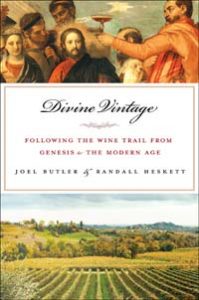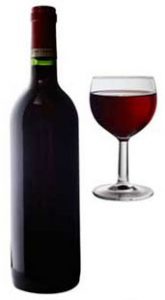History
Israel has no indigenous wine grape varieties, which is surprising because there is a local olive oil variety and table grape variety and there a numerous local varieties in nearby Cyprus. However it appears that when the Holy Land was under the jurisdiction of the Muslims, with first Mameluk rule and then the Ottomans, the growing of wine grapes and the making of wine was actively discouraged. Many of the indigenous varieties disappeared.
Yet the names of grapes used to make wine in the mid 19th century are known. They included varieties such as Hevroni, Dabouki, Marawi, Halbani, Sharwishi, Hamdani, Jandali amongst the whites and Zeitani, Karkashani, Razaki, Karashi, Baladi amongst the reds. Most were grown in the Bethlehem or Hebron areas primarily by Arabs and the names reflect their Arab origins. These varieties were sold to the few Jewish wineries, in particularly in the Old City of Jerusalem. However they are not used by mainstream wineries, apart from the Cremisan Monastery, which still uses them.
In 1870 the Mikveh Israel Agricultural School was set up under French management. They were the first to use European varieties in their own Mikveh Israel Winery, but also supplied cuttings for the first commercial vineyards in the country planted in the years 1882 to 1887. The main varieties were: Alicante, Carignan, Bourdales (aka Cinsault), Braquet (aka Brachetto), Esparte (aka Mourvedre) and Petit Bouschet. They wisely chose Mediterranean varieties considering the climate in what was then called Palestine.
Cuttings from Chateau Lafite
On his first visit to Palestine in 1887, Baron Edmond de Rothschild decided he wanted to make a serious Palestine wine. He made the decision to concentrate on Bordeaux varieties. His administrators in Palestine were against the idea, but his vision was supported by Professor Gayon from Bordeaux and Charles Mortier, the manager and winemaker of Chateau Lafite. This was why Cabernet Sauvignon, Cabernet Franc and Malbec came to be planted in the late 1880’s from cuttings supplied by Chateau Lafite.
However because of the threat of phylloxera, which was already devastating French vineyards, the vines were imported via Kashmir in India. However this precaution did not prevent the vines from succumbing to phylloxera and in the 1890’s they had to be replanted on American rootstock.
Eventually Rothschild’s vision for quality was put on hold as there was not then a market for a quality Palestine wine and the Israeli market became focused on the more inexpensive, value side of the market. This really meant cheap bulk wines and sweet sacramental wines. So the quality Bordeaux varieties were replaced mainly by
Carignan and Grenache, which dominated Israeli winemaking for most of the 20th century. The main white wine grape was Semillon, with varieties like Clairette and Ugni Blanc in a supporting role. The grape for sweet wines was Muscat of Alexandria.
In the early 1970’s the first varietal wines were exported by Carmel. The wines were called Cabernet Sauvignon and Sauvignon Blanc, which were dry and Grenache Rose and Semillon, which were semi dry. In the 1980’s the Golan Heights Winery began an ambitious planting program which involved bringing many of the international noble varieties to Israel. The most planted varieties in Israel were Carignan for red grapes and Colombard for whites. At the same time Carignan was the most planted red variety in France and Colombard the leading white variety in California.
Though Carmel re-introduced Cabernet Sauvignon and Sauvignon Blanc to Israel, the pioneering Golan Heights Winery were the first to launch, or re-launch the following varieties: Merlot, Cabernet Franc, Pinot Noir, Sangiovese, Gamay, Chardonnay, Gewurztraminer, White Riesling and Muscat Canelli.
Red Wines
The three most heavily planted varieties are in Israel today are Cabernet Sauvignon, Carignan and Merlot followed by Shiraz, Argaman and Petite Sirah. Most of the best red wines are either Cabernet Sauvignon, Merlot or Shiraz varietals or Bordeaux blends based primarily on Cabernet Sauvignon and Merlot.
Argaman
Argaman comprises 4% of the varieties in Israel. It is exclusively used for inexpensive blends. Its chief claim to fame is that it is an Israeli variety, even if a modern one. It was created in the early 1990’s as an intended replacement for Carignan. It is a cross between Carignan and the Portuguese grape Souzao, and its main benefit is it does provide good color. However, apart from this, it is undistinguished and not a great success. It is mainly grown in the central coastal and Judean Plain.
Barbera
Widely grown in Italy and at its best in Piedmont, Barbera has become a fashionable ‘new’ variety in Israel. Though there is very little Barbera in Israel, what there is has been used to make Barbera wines. As to quality, the jury is still out.
Cabernet Franc
Cabernet Franc was originally planted by Baron Edmond de Rothschild in the late 1880’s. In those days it was preferred to Cabernet Sauvignon and requests were made to plant more Cabernet Franc than its more illustrious relation. However unlike its near namesake, it never took hold or created any interest until the last ten years or so. Cabernet Franc is used by some wineries as part of a Bordeaux blend and by others as an interesting, slightly exotic varietal. Recently a few wineries have chosen to specialize in it, seeing it as a variety with a future in Israel. It can grow successfully in drier conditions than Cabernet Sauvignon and ripens ealier. The results though are totally different to the cooler Loire Valley, but that is not to say the wines don’t provide a good alternative to the all conquering Cabernet Sauvignon. As a blending component, it adds complexity and still hold on to its characteristic herbaceousness in the hotter climate.
Cabernet Sauvignon
The king of vines in so many countries, it is the same in Israel. It was first planted by Rothschild in the late 1880’s, but never became dominant until use of varietal labeling came into vogue in the early 1970’s. Today the finest Israeli wines tend to be Cabernet Sauvignon varietals or Bordeaux blends.
There are more hectares of Cabernet Sauvignon planted than any other variety in Israel, which translates to about 21% of the total tonnage at harvest.
The best Cabernet Sauvignon is grown in areas with an altitude of 600 meters above sea level. The Upper Galilee and central to northern Golan Heights are arguably the best region for this most noble of noble varieties. The depth of colour, concentration of ripe fruit and tannic structure make this the most successful variety. The danger in Israel’s Mediterranean climate is that the wines do not become too jammy.
However the variety appears most successful as part of a Bordeaux style blend, usually blended with Merlot.
Carignan
Israel’s wine industry was built on the back of Carignan which was appropriate because it is a Mediterranean variety and high yields are possible. Less than 20 years ago, Carignan represented 40% of the grapes planted in Israel. Today with all the new plantings of quality varieties, the percentage of Carignan has dropped to 15% as Israel has focused more on making wines of quality. The variety is mainly used in the production of inexpensive supermarket blends, sweet sacramental wine and even grape juice.
However a few enterprising wineries have, by drastically reducing yields, and selecting older vineyards, managed to make old vine wines of character and distinction.
The traditional region for Carignan is the southern part of Mount Carmel, which overlooks the Mediterranean. The best quality old vine Carignan comes from the small enclosed valleys of Meir Shefaya, just north east of Zichron Ya’acov. The wines show aromas of cherries and raspberries, with a backdrop of Mediterranean herbs.
As its use in Israel spans the history of the modern Israel wine industry and its uses have turned out to be so versatile, the simple Carignan grape may turn out to be the variety associated more than any other with Israel.
Merlot
Merlot was introduced to Israel in the 1980’s. It tends to grow well throughout the country, but never reaches the quality of the best Cabernet Sauvignons. Merlot in Israel is harvested relatively early because it ripens easily. Yields are good and its soft, mild character make it the perfect partner for Cabernet Sauvignons. Most wineries produce a varietal Merlot, which is normally bolstered by 15% Cabernet Sauvignon, but it plays a more significant role in the so called Bordeaux blends.
A great deal of Merlot was planted in the 1990’s and it now represents a 14% of the total.
Petite Sirah
Petite Sirah (sometimes spelt Petite Syrah) came to Israel in the 1970’s and was primarily used in cheap blends. It is a cross between the Syrah and obscure variety Peloursan, and is known as Durif in France. However there is nothing petite about the wines. It is an underrated grape producing powerful, almost black colored wines and is more tannic than Cabernet Sauvignon. Recently the variety has been used to good effect by using old vine vineyards up to 40 years old to produce blockbuster wines. Petite Sirah grows best in the Judean Foothills. It appears that like in California and Australia, this variety has found a niche in Israel for those looking for something other than Cabernet Sauvignon and Merlot. It is a variety that has a small but loyal following.
Petit Verdot
Petit Verdot is a grape sparingly used in Bordeaux, where it has difficulty ripening in some years. However there are no such problems in Israel, where its structure and color are making it an important part of the premium blends of some major wineries. It appears to do well in a wide variety of places in Israel, whether in the coastal regions, the Judean Hills or Upper Galilee. Whilst appreciating its usefulness as a blender, most winemakers have so far proved reluctant to produce it as a single varietal feeling it lacks the depth to stand on its own. Interestingly though, it has replaced Merlot as the second most dominant variety after Cabernet, in some of the country’s finest Bordeaux blends.
Pinot Noir
Pinot Noir first came to Israel with the Latroun Monastery. The wines were very light, but definitely with a Pinot Noir nose. In the early 1990’s it was planted more for commercial use and was mainly used in sparkling wine. However it is a grape too fickle for the hot, humid Israeli climate and without doubt is not suited to Israel. The northern Golan Heights, up to 1,200 meters above sea level, is the best region for this variety.
Sangiovese
Sangiovese was introduced to Israel on the Golan Heights. This famous Tuscan variety rarely performs well outside Italy and even in Italy sometimes gives variable results. So it is not a surprise that it is not a great success in Israel. Most is planted on the Golan. The majority is used in lesser expensive blends.
Shiraz/ Syrah
Shiraz is a fairly recent new immigrant having come to Israel in the late 1990’s. Wines produced from the French clone tend to be called Syrah and from the Australian clone, Shiraz. Whatever its origin, Shiraz is the more commonly used name in Israel. Though now with only just over a 8% share, it is still a minor player. However it is widely regarded as a grape for the future being ideal for the Israeli climate. The best regions for this variety are the Judean Foothills, Judean Hills and Upper Galilee. In fact it shows good results everywhere. As many of the vineyards are quite young, the Shiraz character is becoming more pronounced as the vines become older. This could challenge the Cabernet Sauvignon as Israel’s finest grape variety in the future.
There are other varieties being planted, trialed or released by individual wineries. These include Malbec, which is returning after 100 years, Tempranillo, and Pinotage, which Barkan have won prizes for. Most eagerly awaited are Mediterranean varieties such as Mourvedre and the return of virus free and a better clone of Grenache. There is even Zinfandel in Israel. Much goes into White Zinfandel Blush wine. However it rots easily, often before ripening, but two wineries in particular have persevered to produce Zinfandel wines.
White Grapes.
The main white varieties for the finest white wines are Chardonnay and Sauvignon Blanc. There are also White Rieslings, Gewurztraminers and Viogniers. The main varieties in numbers of hectares are Colombard and Emerald Riesling followed by Muscat of Alexandria, Sauvignon Blanc and Chardonnay.
Chardonnay
Chardonnay was first launched in Israel in 1987. Since then is well regarded as being the variety for the finest white wines in Israel.
The finest region for Chardonnay was always considered to be the northern Golan Heights, but some of the finest Chardonnays are now being produced in the rolling hills between the Judean Foothills and the Judean Hills. Without doubt the oaky, high alcohol, ‘peaches and cream’ Chardonnays are proving less fashionable. The part use of stainless steel to reduce the influence of oak in order to preserve green apple aromas and produce better food wines, is the new ‘in’style.
Colombard
French Colombard came to Israel in the 1970’s. Since then it has become Israel’s most heavily planted white variety, though at 5% of the total, it is far less than it was. The variety is grown at its best in the southern Mount Carmel around Zichron Ya’acov. It produces aromatic wines with excellent acidity, but is usually used in inexpensive, fresh fruity white wine blends.
Emerald Riesling
Emerald Riesling arrived in Israel in the late 1970’s. In the 1980’s and 90’s, it became by far Israel’s largest selling wine. Many new wine lovers were seduced by the very flowery, aromatic nose and spicy finish of these semi dry, sometimes medium, wines. The Emerald Riesling performed the same job that Liebfraumilch did in the United Kingdom and Lambrusco did in America. Those heady days have passed, but Emerald Riesling is still has its place.
Emerald Riesling was the result of an attempt by the University of California at Davis to produce good yields from a Riesling in a hot climate. It was a cross between the German Riesling and Muscadelle and was created in 1948, ironically the year of the foundation of the State of Israel. In the end it did not take off anywhere – apart from Israel.
Gewurztraminer
Gewurztraminer was planted on the Golan Heights by the Golan Heights Winery. It certainly needs the colder climate of the northern Golan to reach the optimum Gewurztraminer nose. It provided a welcome newcomer for those looking for higher quality semi dry white wines. However though good international wines they will never be a match for cooler climate Gewurztraminers from Alsace or New Zealand. By far the most successful Israeli use for the Gewurztraminer grape is in the production of luscious dessert wines. Some examples are genuine world class wines, which win a host of awards.
Muscat of Alexandria
An indigenous grape of the Eastern Mediterranean is the Muscat of Alexandria. It is part of the large Muscat family. This is a big berried grape also used elsewhere to make raisins and table grapes. In Israel it makes a sweet, aromatic, grapey dessert wine. The best area for the Muscat is the central coastal Judean Plain.
Sauvignon Blanc
There has been a revolution in Sauvignon Blancs in the last few years. It was a variety Israelis did not master until recently. That is not to say Sancerre and New Zealand will be quaking in their boots. Israel will never achieve the grassiness of a Sancerre or the concentration of tropical flavors of a New Zealand Sauvignon. However by planting at higher altitudes, harvesting early and using cold fermentation in stainless steel, the best represent good international standard wines in a fresh, crisp style. They certainly represent better food wines than many Israeli Chardonnays and are suitable to the Israeli climate.
Viognier
Considering there is so little Viognier planted, there are a surprising number of Viogniers on the market. They appear to produce good wines in the Mediterranean climate with the attractive apricot, pear aroma associated with the variety. There is a variety in the production styles. Some are dry, others semi dry and some are oak aged and others are fermented and stored only in stainless steel tanks.
White Riesling
This variety is often known as Johannisberg Riesling within Israel and White Riesling in export markets. It makes a welcome change to the more rustic Emerald Riesling. It is grown at its best in the northern Golan Heights or Upper Galilee.
The finest Rieslings in Israel are usually made in an ‘off dry’style, hovering between dry and semi dry.
Other whites in Israel include the Semillon and Chenin Blanc. Both have been a long time in Israel but resulting wines in the past were poor and they are not planted in the most advantageous regions. So they have become unfashionable. Muscat Canelli (aka Muscat de Frontignan) has also arrived and produces dessert wines with a more delicate aroma than the Muscat of Alexandria, but as yet is only sparsely planted. Most interesting is the experimental plantings of those Mediterranean varieties Marsanne and Roussanne.
Adam Montefiore works for Carmel Winery and regularly writes about wine in both Israeli and international publications.









